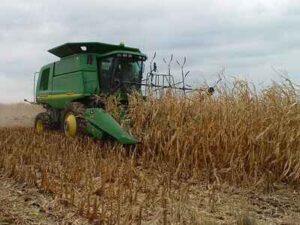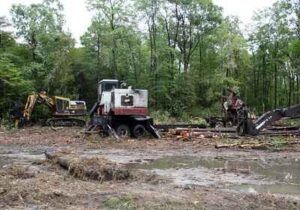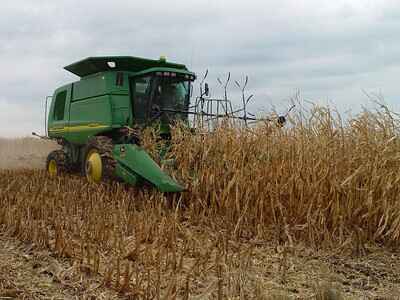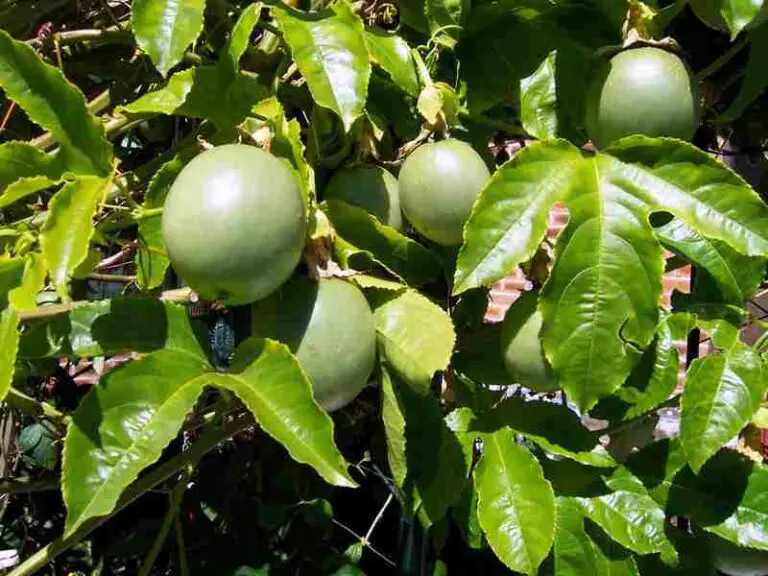7 Disadvantages of Biofuels Explained
Disadvantages of biofuels are; food production decline, unsustainable land use, labor costs, low energy density, high water demand, induced deforestation, and corrosiveness.
This article explains the disadvantages of biofuels, as follows;
1). Food Production Decline (as one of the Disadvantages of Biofuels)
One of the problems with biofuel production is its effect on the production of food.
Biofuels affect food production by consuming some essential resources needed for the production of food, including land, water, labor and fertilizer.
Because of this, the development of the bioenergy sector in some parts of the world has been linked to socioeconomic challenges like food insecurity from reduced production and high prices [10].
Increasing the use of biofuel as an energy resource, may cause food shortages because a major portion of the biomass that is used as feedstock in biofuel production, comes from food crops or food waste; where the former could be distributed as an edible and the latter could be used to generate compost for producing more food.
It must be noted, however, that the impact of biofuel production on food supply varies from one region or location to another.
While the use of biofuels like ethanol can grossly affect food prices all over the world, it does not necessarily pose a threat to food supply in countries with a robust and highly-productive agricultural sector, such as the United States [11].
Regions where biofuel production poses the greatest food-shortage risk, are regions where food supply is barely adequate to meet demand, as a result of issues like overpopulation, desertification, and low agricultural development.
It is also possible to reduce the impact of biofuels on food production, by limiting biofuel feedstock to non-edible materials like food waste. This way, biofuel production can become rather beneficial by helping to divert organic waste from landfills.
2). Unsustainable Land Use
One of the environmental problems with biofuels is their effect on land use.
Cultivation of feedstock is a land-intensive process that demands large amounts of space to be achieved at any significant scale.
Land that is used to grow these feedstocks for producing biofuels, is usually diverted from other uses, such as natural ecosystem conservation and agriculture [2].
When land that was formerly occupied by grassland or forest, is converted to a biomass feedstock-farm, the physicochemical and biological changes that occur alongside this change in land use, can be negative.
An example of this is lower rates of carbon sequestration, which can contribute to global warming.
Using land to cultivate biofuel feedstock, can also encourage unsustainable agricultural practices, because of the need for high-volume production. These unsustainable practices include excessive irrigation and fertilizer application, both of which can cause the degradation of soil.
Also, if land diversion for biofuel production leads to shortage of agricultural land, food crop-prices can significantly rise, making them less accessible to low-income earners [1].
The negative land-use effect of biofuel feedstock cultivation can be mitigated by cultivating such feedstock on already-degraded soil, thereby achieving both feedstock growth and bioremediation [3].

3). Labor Costs (as one of the Disadvantages of Biofuels)
Factors that determine the cost of biofuel include land, labor, biofuels sources (type of feedstock), and scale of biofuel processing technology.
The cost of producing biofuel ranges from 0.68 to 0.75 USD per liter, in developing and developed countries respectively [8].
This values are high compared to gasoline, and reduces the economic appeal of biofuel as a renewable fuel resource.
Biofuels cost more than gasoline because of the need for significant amounts of labor (human and machinery-based) in addition to land, growth enhancement, soil conservation and biomass conversion facilities.
Studies have identified direct links between labor demand and biofuel cost, and have shown that biofuels are barely competitive at all times except periods of petroleum price-increase or scarcity [5].
4). Low Energy Density
Biofuels have low energy density compared to other energy resources like nuclear fuel, coal and gasoline.
The low energy density of biofuel is caused by its chemical composition, which includes an oxygen proportion of 10-45%, and far less carbon than is found in petroleum [4].
Although oxygen increases the combustion efficiency of biofuels, it replaces carbon which is a key contributor to the stored energy in fuels.
Because they are less energy dense, biofuels often have to be blended with gasoline and other fuels before they can be used productively. This reduces the relevance of biofuel itself as an independent energy resource.
Improving the energy density (and hence; the energy efficiency) of biofuel has been a prominent topic of biotechnological research, with some findings suggesting that microbial feedstocks like bacteria can yield high-energy density biofuel [7].
5). High Water Demand (as one of the Disadvantages of Biofuels)
Biofuels use lots of water at all stages of their production, including the cultivation of feedstock, and the processing of this feedstock [12].
This means that bioenergy development is not generally in unison with water conservation, so that it is hardly possible to achieve both goals simultaneously. It also implies that utilizing biofuels is only recommendable where there is sufficient water to manage its production, with minimal risk of drought.
The amount of water needed to produce biofuel depends on the production method, equipment and feedstock being used.
At the cultivation level, water consumption rate for irrigation of land, for biofuel feedstock may range from 500 to over 2,500 liters of water per liter of biofuel on average. At the processing level, biorefineries may require between 1 and 10 liters of water per liter of biofuel.
These consumption rates are enormous when cumulated, and they challenge the sustainability of biofuel as a source of energy.
Aside reducing the amount of water available, biofuel production can also affect water quality, if carried out without adequate management measures [13].
6). Induced Deforestation
The use of biofuels drives deforestation where forests are used as a primary source of feedstock, and regeneration rates are low or inadequate to completely restore lost vegetation.
Biofuels cause deforestation both by converting forests to feedstock sources, and by converting forested land to feedstock farmland [9].
The role of biofuels in deforestation is dependent on the approach to feedstock sourcing and biofuel usage.
Aside direct extraction of vegetation from forested land, biofuels can cause deforestation by emitting greenhouse gases and pollutants that affect the growth of plants. These effects can occur if the production and use of biofuel are not conducted in a sustainable manner.

7). Corrosiveness (as one of the Disadvantages of Biofuels)
Some biofuels like biodiesel are corrosive, and can degrade various kinds of metal including mild steel and copper when used in engines and other metallic technological components.
Biodiesel is corrosive because of its oxygen content and acidity, which allow it to induce oxidation and degradation of metals.
The corrosiveness of biofuels make them less-desirable as additives in gasoline, since the blends resulting from such mixed fuels can be damaging to machinery [6].
Conclusion
Disadvantages of biofuels are;
1. Food Production Decline
2. Unsustainable Land Use
3. Labor Costs
4. Low Energy Density
5. High Water Demand
6. Induced Deforestation
7. Corrosiveness
References
1). Austin, K. G.; Jones, J. P. H.; Clark, C. M. (2022). "A review of domestic land use change attributable to U.S. biofuel policy". Renewable and Sustainable Energy Reviews, Volume 159, May 2022, 112181. Available at: https://doi.org/10.1016/j.rser.2022.112181. (Accessed 10 March 2023).
2). Barnabè, D.; Bucchi, R.; Rispoli, A.; Chiavetta, C.; Porta, P. L.; Bianchi, C. L.; Pirola, C.; Boffito, D. C.; Carvoli, G. (2013). "Land Use Change Impacts of Biofuels: A Methodology to Evaluate Biofuel Sustainability." Available at: https://doi.org/10.5772/52255. (Accessed 10 March 2023).
3). Biswas, T. K.; Williams, C. M. J. (2020). "Second generation biofuel crops from poor quality water and degraded lands." Available at: https://doi.org/10.22271/09746315.2020.v16.i1.1266. (Accessed 10 March 2023).
4). Demirbaş, A. (2009). "Combustion Efficiency Impacts of Biofuels." Energy Sources, Part A: Recovery, Utilization and Environmental Effects 31(7):602-609. Available at: https://doi.org/10.1080/15567030701743718. (Accessed 10 March 2023).
5). Hill, J.; Nelson, E.; Tilman, D.; Polasky, S.; Tiffany, D. (2006). "Environmental, economic, and energetic costs and benefits of biodiesel and ethanol biofuels." Proc Natl Acad Sci U S A. 2006 Jul 25;103(30):11206-10. Available at: https://doi.org/10.1073/pnas.0604600103. (Accessed 10 March 2023).
6). Hoang, A. T.; Tabatabaei, M.; Aghbashlo, M. (2019). "A review of the effect of biodiesel on the corrosion behavior of metals/alloys in diesel engines." Energy Sources, Part A: Recovery, Utilization and Environmental Effects 42(4):1-21. Available at: https://doi.org/10.1080/15567036.2019.1623346. (Accessed 10 March 2023).
7). Irving, M. (2022). "Bacteria-made biofuel packs higher energy density than jet fuel." Available at: https://newatlas.com/energy/bacteria-biofuel-higher-energy-density-jet-fuel/. (Accessed 10 March 2023).
8). Mizik, T.; Gyarmati, G. G. (2021). "Economic and Sustainability of Biodiesel Production—A Systematic Literature Review." Clean Technologies 3(1):19-36. Available at: https://doi.org/10.3390/cleantechnol3010002. (Accessed 10 March 2023).
9). Stallard, E.; Song, W. (2021). "Indonesia's biodiesel drive is leading to deforestation." Available at: https://www.bbc.com/news/59387191. (Accessed 10 March 2023).
10). Subramainam, Y.; Masron, T. A.; Azman, N. H. N. (2019). "The impact of biofuel on food security." International Economics 160(4). Available at: https://doi.org/10.1016/j.inteco.2019.10.003. (Accessed 10 March 2023).
11). Tenenbaum, D. (2008). "Food vs. Fuel: Diversion of Crops Could Cause More Hunger." Environmental Health Perspectives 116(6):A254-7. Available at: https://doi.org/10.1289/ehp.116-a254. (Accessed 10 March 2023).
12). Tilman, D.; Hill, J.; Lehman, C. (2006). "Carbon-negative biofuels from low-input high-diversity grassland biomass." Science. 2006 Dec 8;314(5805):1598-600. Available at: https://doi.org/10.1126/science.1133306. (Accessed 10 March 2023).
13). Wu, M.; Zhang, Z.; Chiu, Y. (2014). "Life-cycle Water Quantity and Water Quality Implications of Biofuels." Current Sustainable/Renewable Energy Reports 1(1). Available at: https://doi.org/10.1007/s40518-013-0001-2. (Accessed 10 March 2023).




